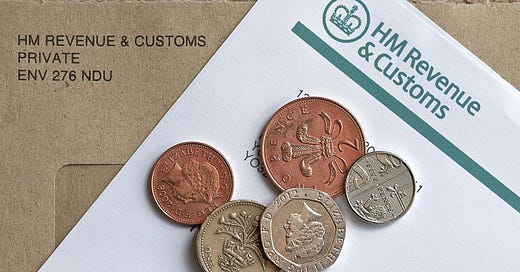Tax was one of the dominant themes of the Conservative conference (along with chaos, conspiracism, and rail cancellations). 33 Tory MPs – mostly Truss supporters - signed a pledge not to support “any new taxes that increase the tax burden”. It’s fair to say these are not people overly troubled by shame or introspection.
In practice this is a largely symbolic pledge. The government is already committed to some of the biggest tax increases we’ve ever seen but is unlikely to push for any more pre-election, or at least not unless they are accompanied by offsetting tax cuts.
The question of what cuts might be possible, probably in the spring budget, also continues to preoccupy the right-wing press, with hints at inheritance or income tax reductions. But for now Jeremy Hunt has refused to commit to anything. Again, in reality, any cut, and I do think there will be at least one, will not come close to matching the extent of already planned increases.
There are two things driving higher taxes. First sluggish economic growth over the past 15 years has meant they are needed to support the rising costs of the state. From 2010-2016 the government more or less managed higher healthcare and pensions costs by cutting other spending. But that couldn’t ever be a permanent strategy and spending on other things, like policing and local government, has had to start rising again too.
Secondly, we borrowed a lot of money to get through covid, on top of an already growing debt pile, and the interest that needs to be paid on that debt has increased a lot. We are due to spend around £100 billion on debt interest this year. Which is 8% or so of all spending.
Last week, in part one of my guide to the public finances, I set out why it will be very hard for the next government to cut spending, and why, in fact, it will almost certainly have to rise well above existing projections for 2025-2028.
This week we’re going to look at the other side of the ledger. How might a future government pay for more spending? (Assuming that they want to stay within their “fiscal rules”, which constrains the amount of borrowing they can do). I’m going to use the same format as last week. First the big picture – how much do we get from where? Then the major conclusions that arise from the big picture. Then what it means for the next government.
Keep reading with a 7-day free trial
Subscribe to Comment is Freed to keep reading this post and get 7 days of free access to the full post archives.




